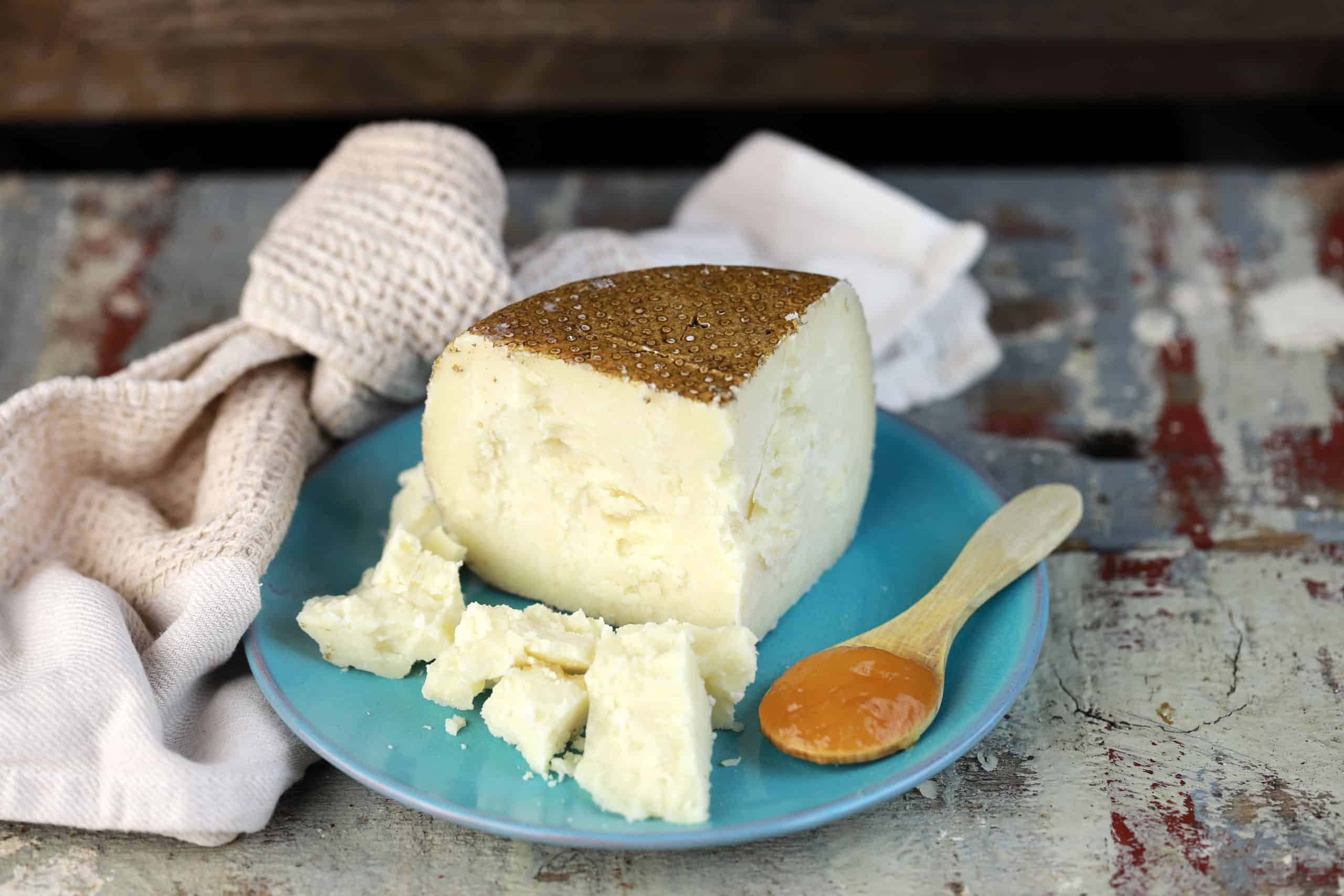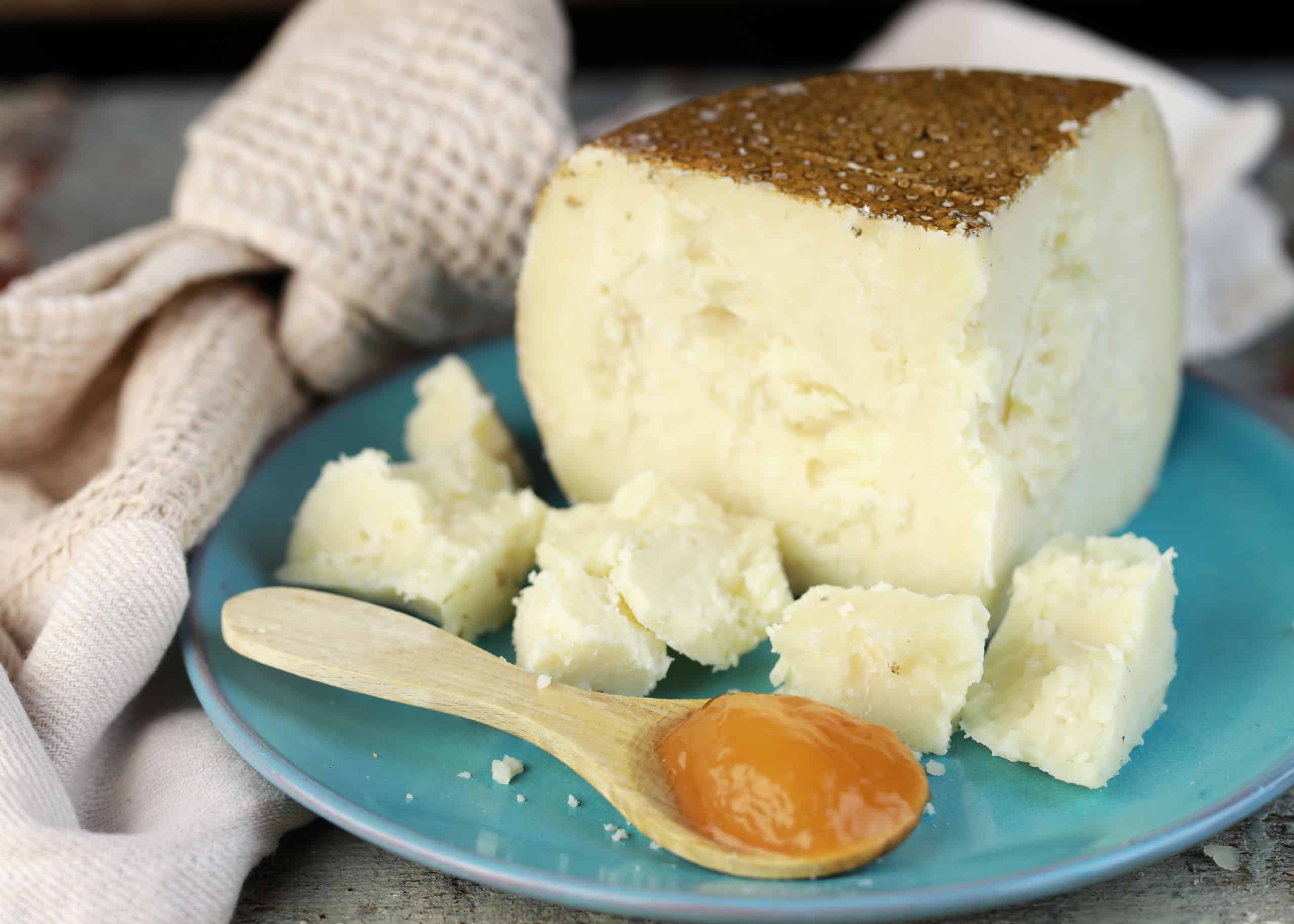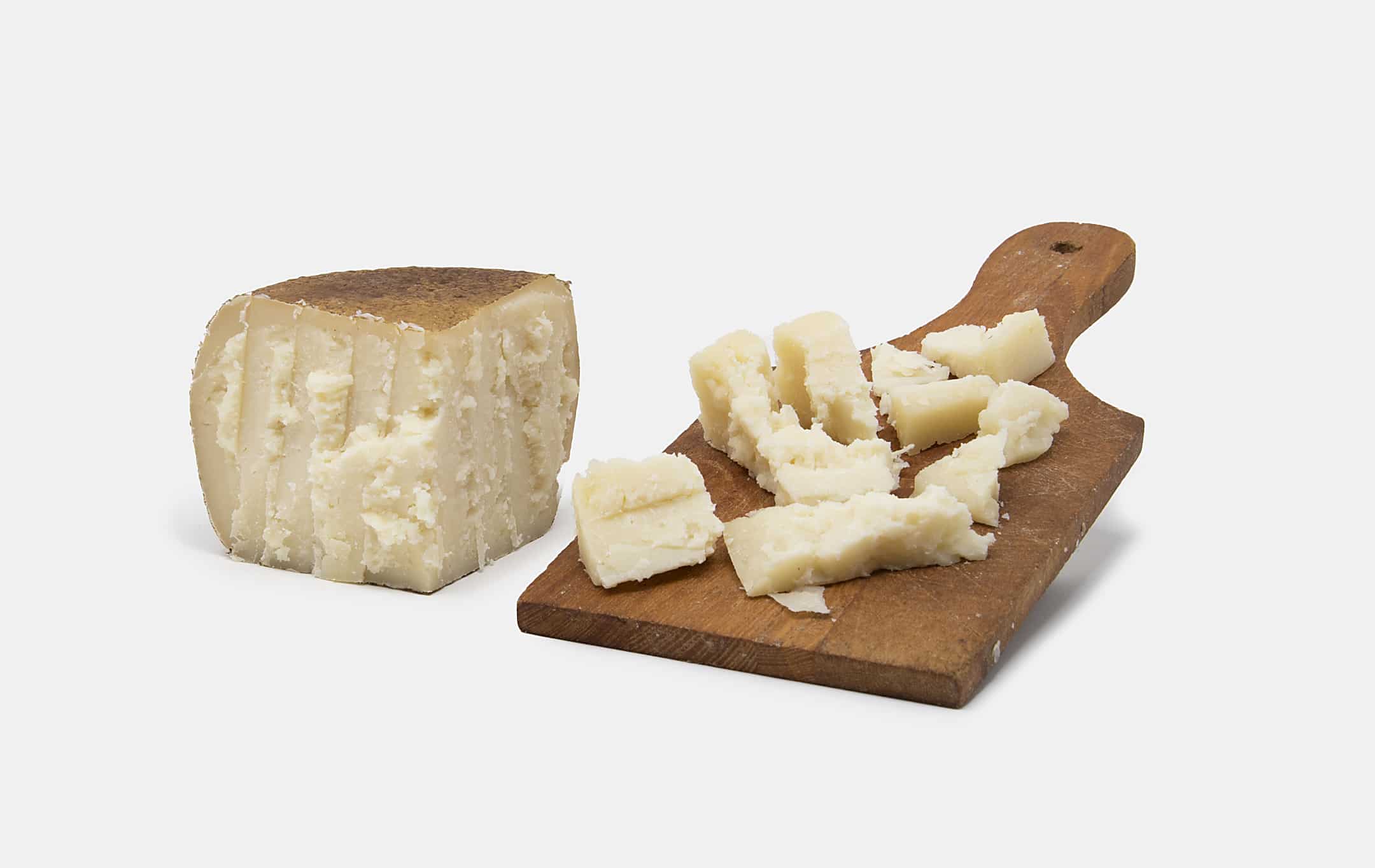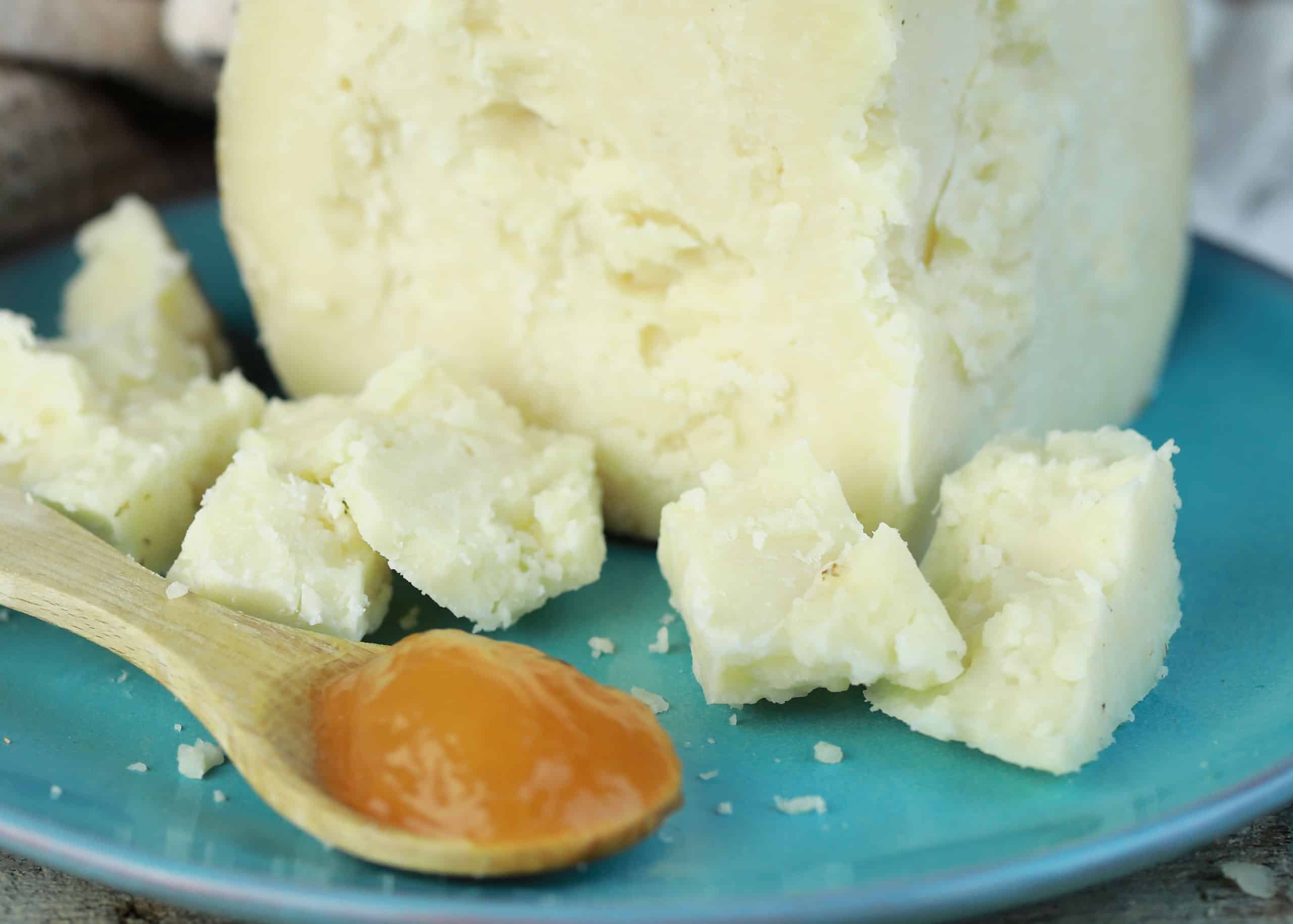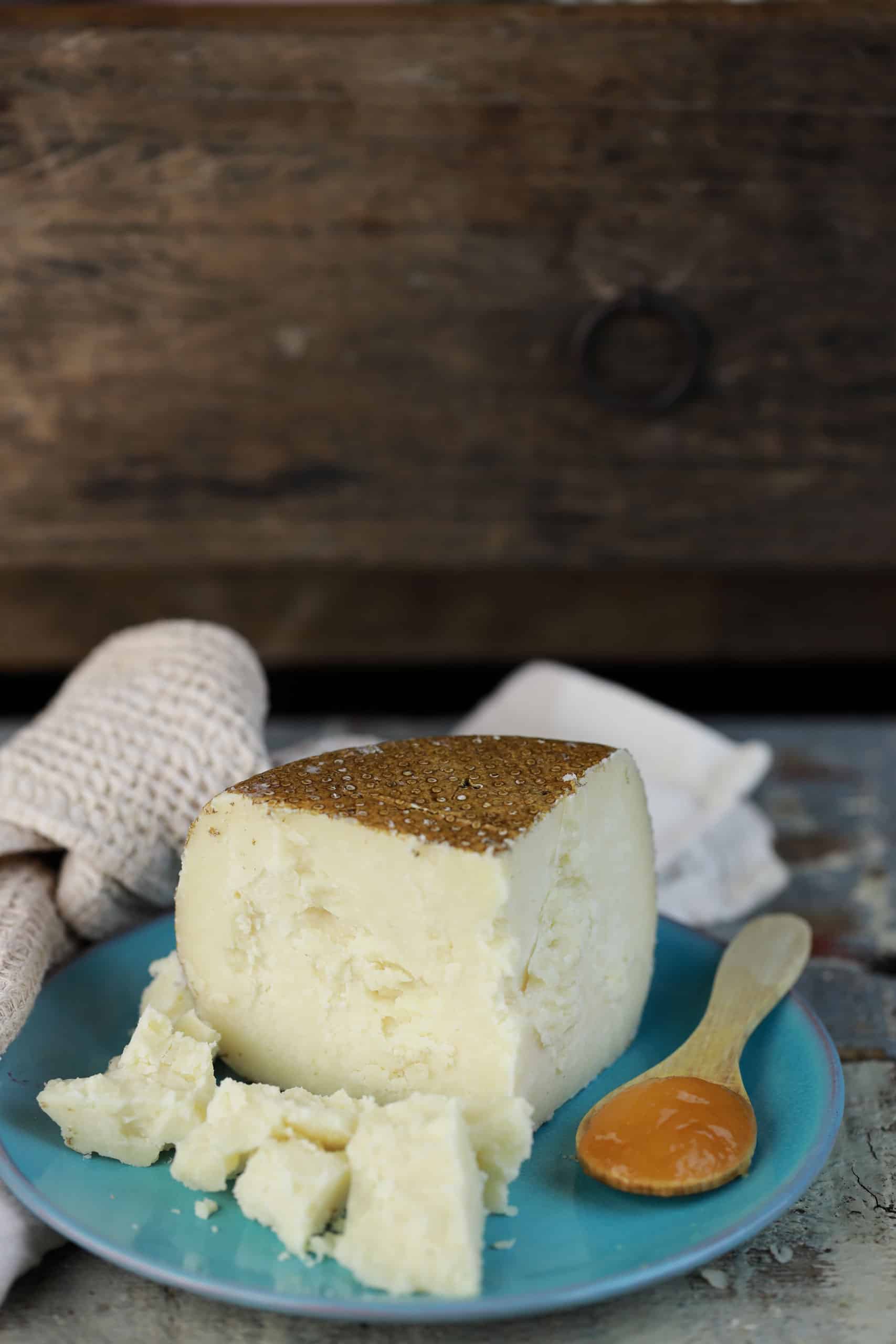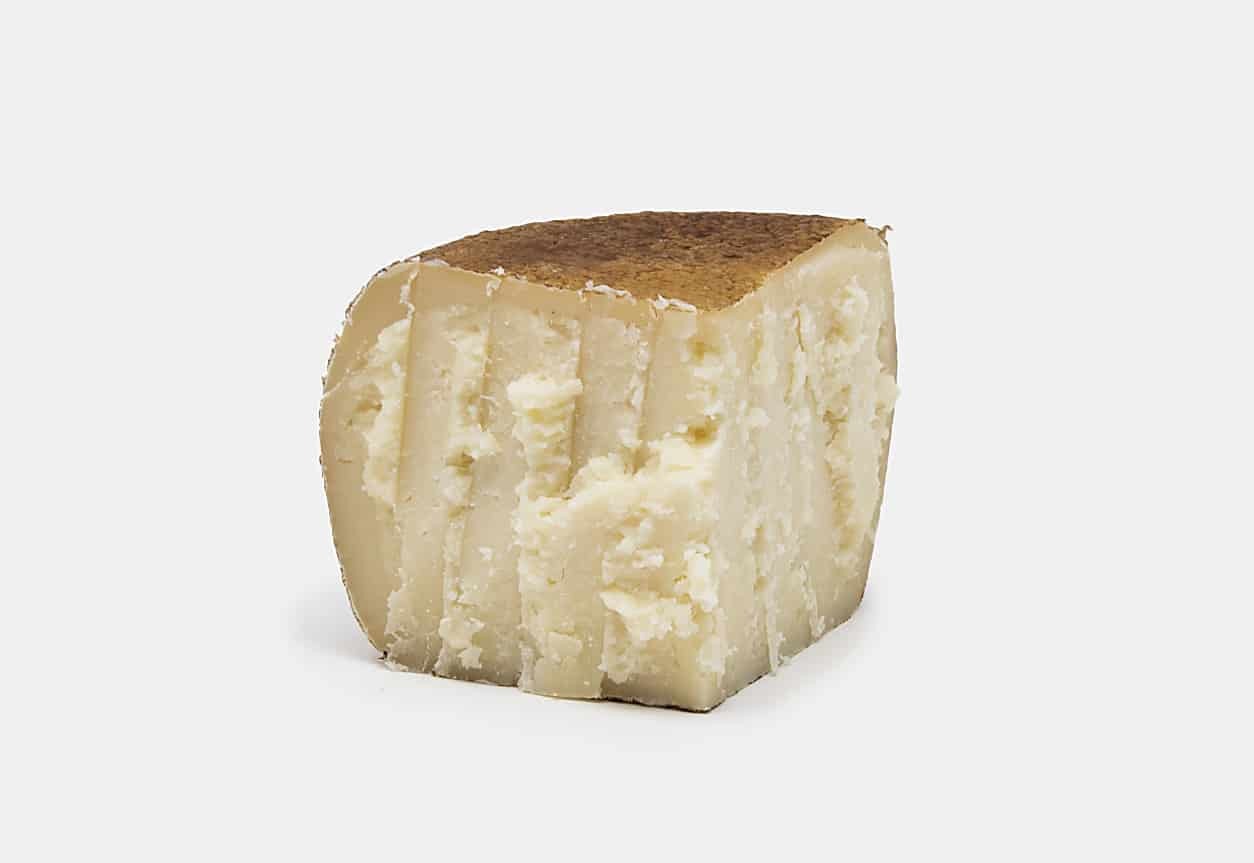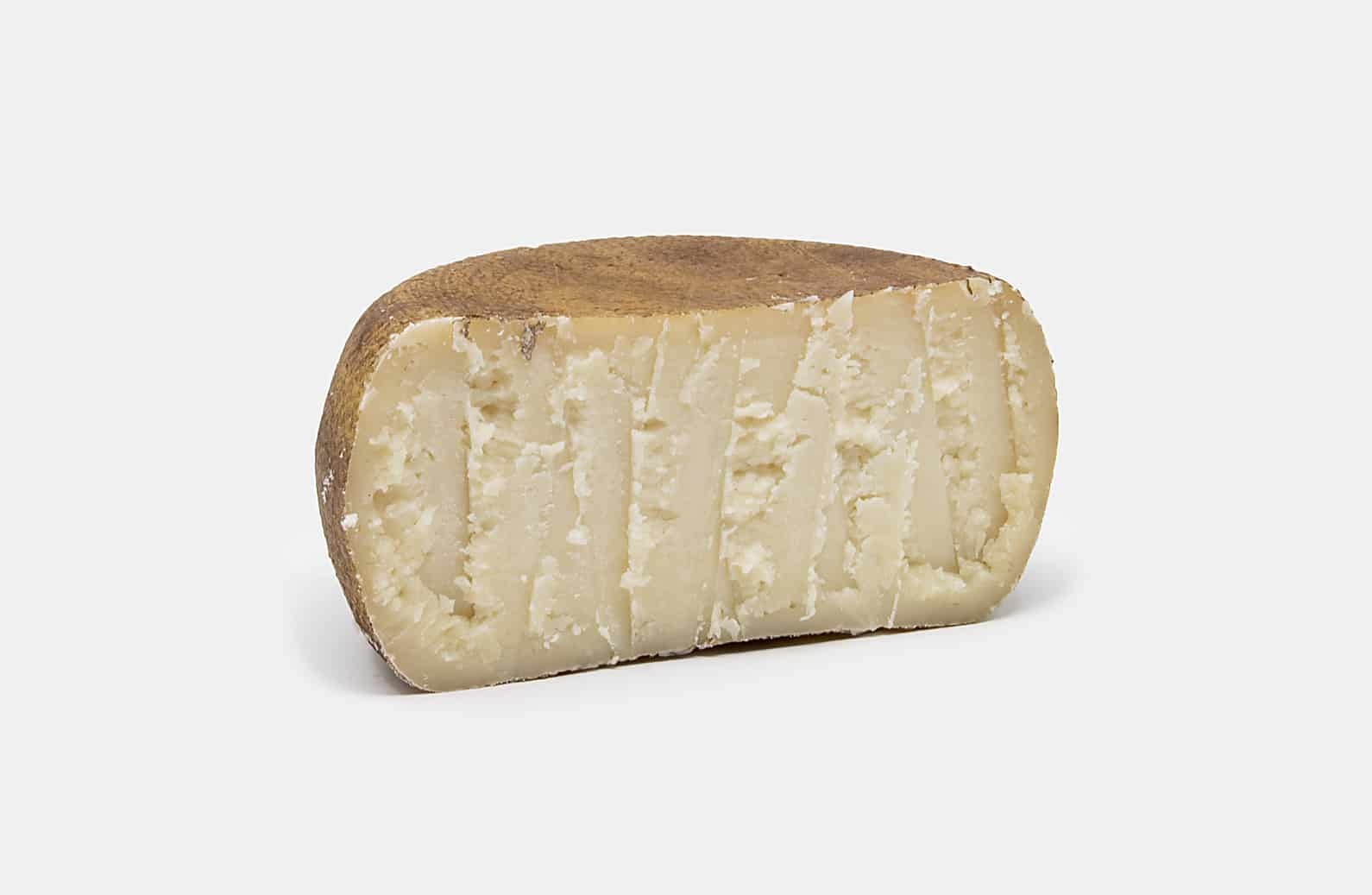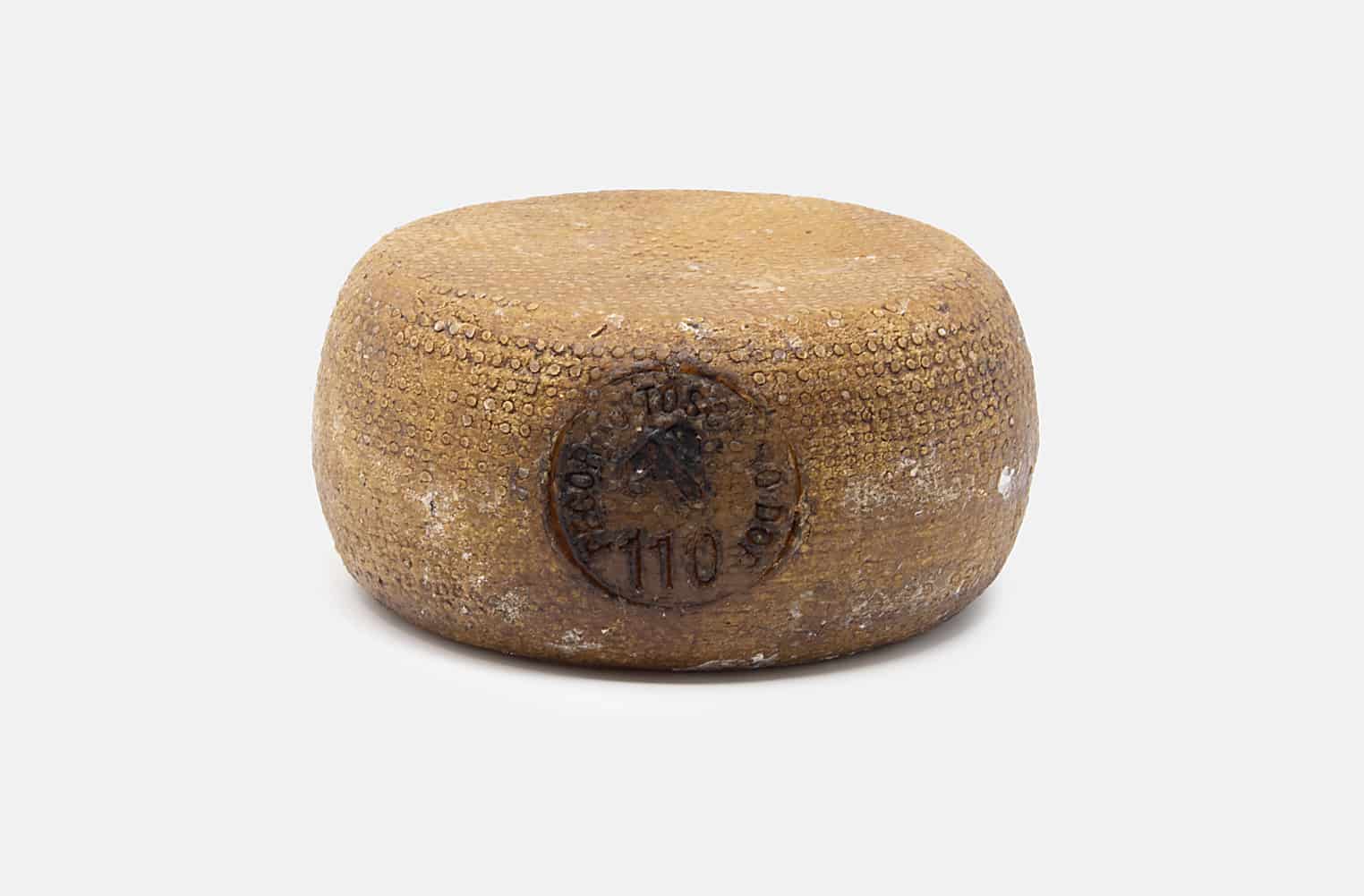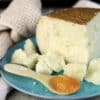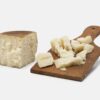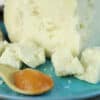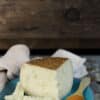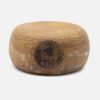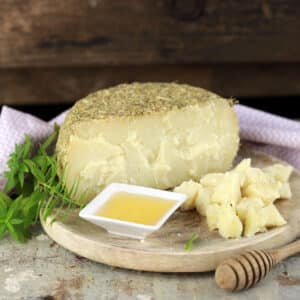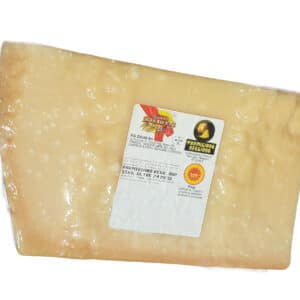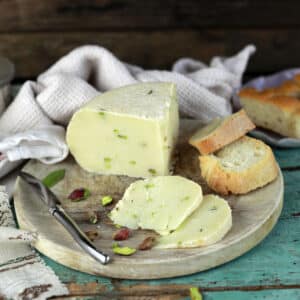Made for us by the Maremma di Follonica Dairy – a family business that has been an ambassador in the world of the Tuscan dairy tradition since the 1960s – our PDO Tuscan Aged Pecorino is produced with sheep’s milk coming exclusively from the pastures of the Tuscany Region or from neighboring ones that are in any case included in the specification.
The only other ingredients that are used in its realization – in addition to the pasteurized milk of Tuscan sheep – are rennet, Volterra salt and native lactic ferments.
Seasoned Pecorino Toscano PDO must mature for at least four months, but it can also reach a year. Thanks to this long maturation, the delicately sweet taste of fresh milk that characterizes it when young, is lost in favor of a more structured aromatic complexity and a more intense taste, immediately recognizable, with notes of dried fruit and hay that tend to intensify with the extension of the vesting period.
With aging, in addition to the transformation of flavor, we also have a variation in the color and hardness of the rind (which from soft and straw yellow becomes slightly harder and amber) and in the consistency of the paste (which from tender and velvety to the palate becomes semi-hard and compact).
It can be tasted at any time of the day alone or accompanied with jams and marmalades. It is perfect as a table cheese, ideal in the aperitif buffet, or during an appetizer, but it is also indicated as an end of a meal, cut into flakes on tasty salads, grated on pasta or in addition to the filling for cannelloni and crepes.
Due to its intense flavor, it is particularly suitable for more mature palates who are able to fully appreciate the aromatic intensity and the many nuances that this cheese acquires with aging. It is precisely because of this important complexity of taste that Pecorino Stagionato Toscano PDO is also referred to as a “meditation cheese” to be enjoyed together with a glass of aged red wine.
PDO Tuscan Aged Pecorino – The History
The history of PDO Tuscan Aged Pecorino has its roots in the Etruscan era. It is in fact in this period that the indigenous populations of modern Tuscany who grazed their flocks in the same meadows where sheep are still raised today, perfected the art of cheese making by introducing the use of vegetable rennets and producing and preserving large cheeses. , suitable for feeding large families even for a long time.
Dairy production started by the Etruscans remained an important activity even in Roman times, as evidenced by the naturalist writer and provincial governor, Pliny the Elder in his Naturalis Historia.
During the Middle Ages, the importance of sheep farming became so vital for the survival of the populations, that it spread throughout Italy. The episode of a very young Giotto, shepherd of a flock in Mugello, is legendary, who is “discovered” by Cimabue while he is intent on drawing a sheep on a boulder.
One of the first written testimonies of the goodness of pecorino dates back to 1475 when Bartolomeo Platina, humanist and gastronome, celebrated the “Marzolino of Etruria” as the best cheese of the peninsula alongside Parmesan.
During the nineteenth century, the art of making cheese was codified by the regulations of the Chambers of Commerce of the time. However, starting from the 1930s, sheep farming throughout Italy suffered a severe setback due to a policy that encouraged the cultivation of agricultural land, relegating pastoralism to the most marginal lands. During the Second World War, pastoral activity collapsed and it was necessary to wait until 1960 for a reversal of the trend and for a resumption of the production of Pecorino Toscano.
The protected designation of origin was established by EC regulation in 2006, while the production specification will be published in the Official Gazette in 2010.
Ingredients
Pasteurized sheep’s MILK, Volterra salt, rennet, native enzymes, preservative E235, colorant E172 treated on the surface.
Inedible rind.
Store from + 2 ° to + 10 ° C.
Produced and packaged in the IT 09 038 CE factory.

